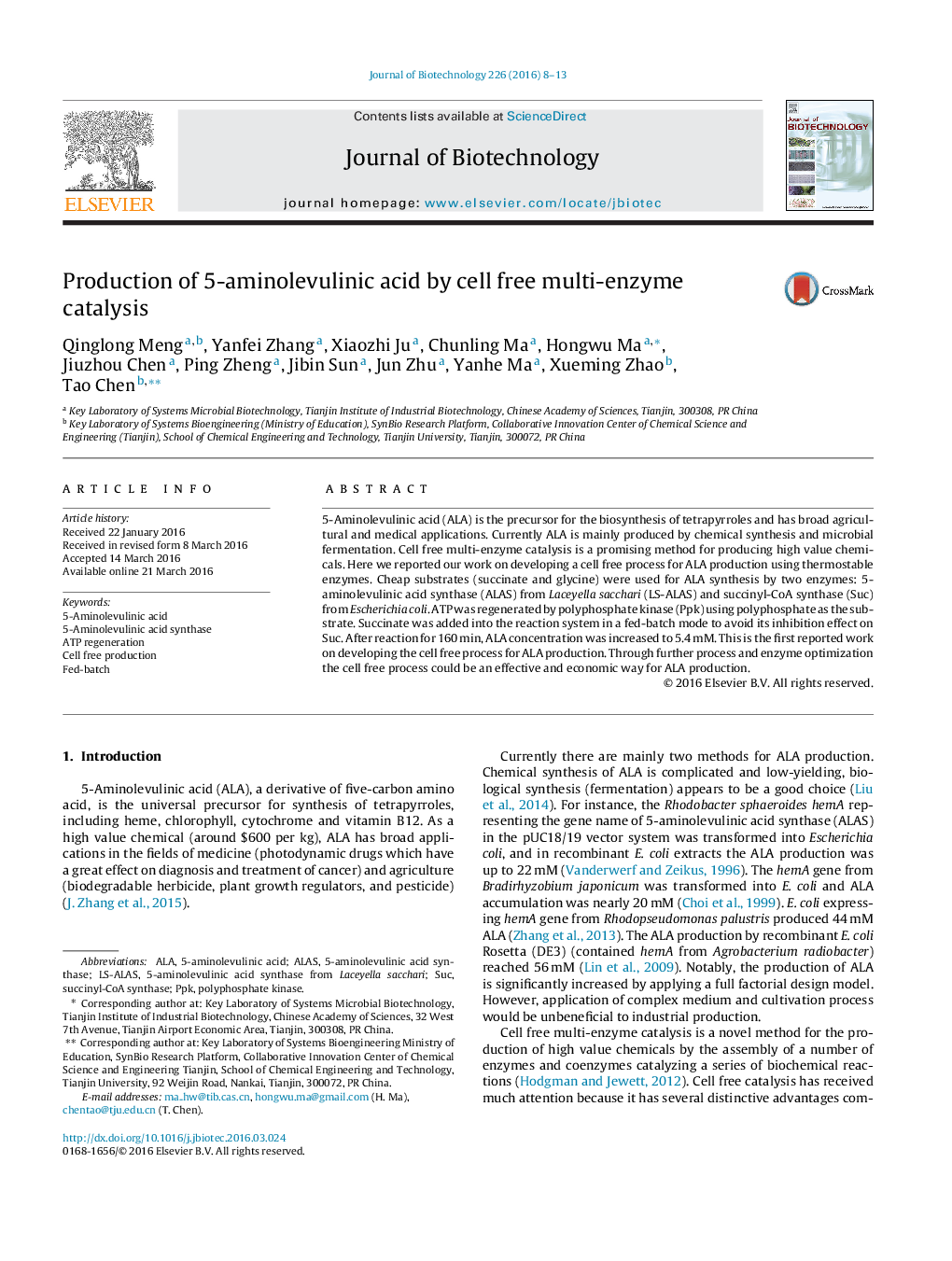| Article ID | Journal | Published Year | Pages | File Type |
|---|---|---|---|---|
| 6490580 | Journal of Biotechnology | 2016 | 6 Pages |
Abstract
5-Aminolevulinic acid (ALA) is the precursor for the biosynthesis of tetrapyrroles and has broad agricultural and medical applications. Currently ALA is mainly produced by chemical synthesis and microbial fermentation. Cell free multi-enzyme catalysis is a promising method for producing high value chemicals. Here we reported our work on developing a cell free process for ALA production using thermostable enzymes. Cheap substrates (succinate and glycine) were used for ALA synthesis by two enzymes: 5-aminolevulinic acid synthase (ALAS) from Laceyella sacchari (LS-ALAS) and succinyl-CoA synthase (Suc) from Escherichia coli. ATP was regenerated by polyphosphate kinase (Ppk) using polyphosphate as the substrate. Succinate was added into the reaction system in a fed-batch mode to avoid its inhibition effect on Suc. After reaction for 160Â min, ALA concentration was increased to 5.4Â mM. This is the first reported work on developing the cell free process for ALA production. Through further process and enzyme optimization the cell free process could be an effective and economic way for ALA production.
Keywords
Related Topics
Physical Sciences and Engineering
Chemical Engineering
Bioengineering
Authors
Qinglong Meng, Yanfei Zhang, Xiaozhi Ju, Chunling Ma, Hongwu Ma, Jiuzhou Chen, Ping Zheng, Jibin Sun, Jun Zhu, Yanhe Ma, Xueming Zhao, Tao Chen,
